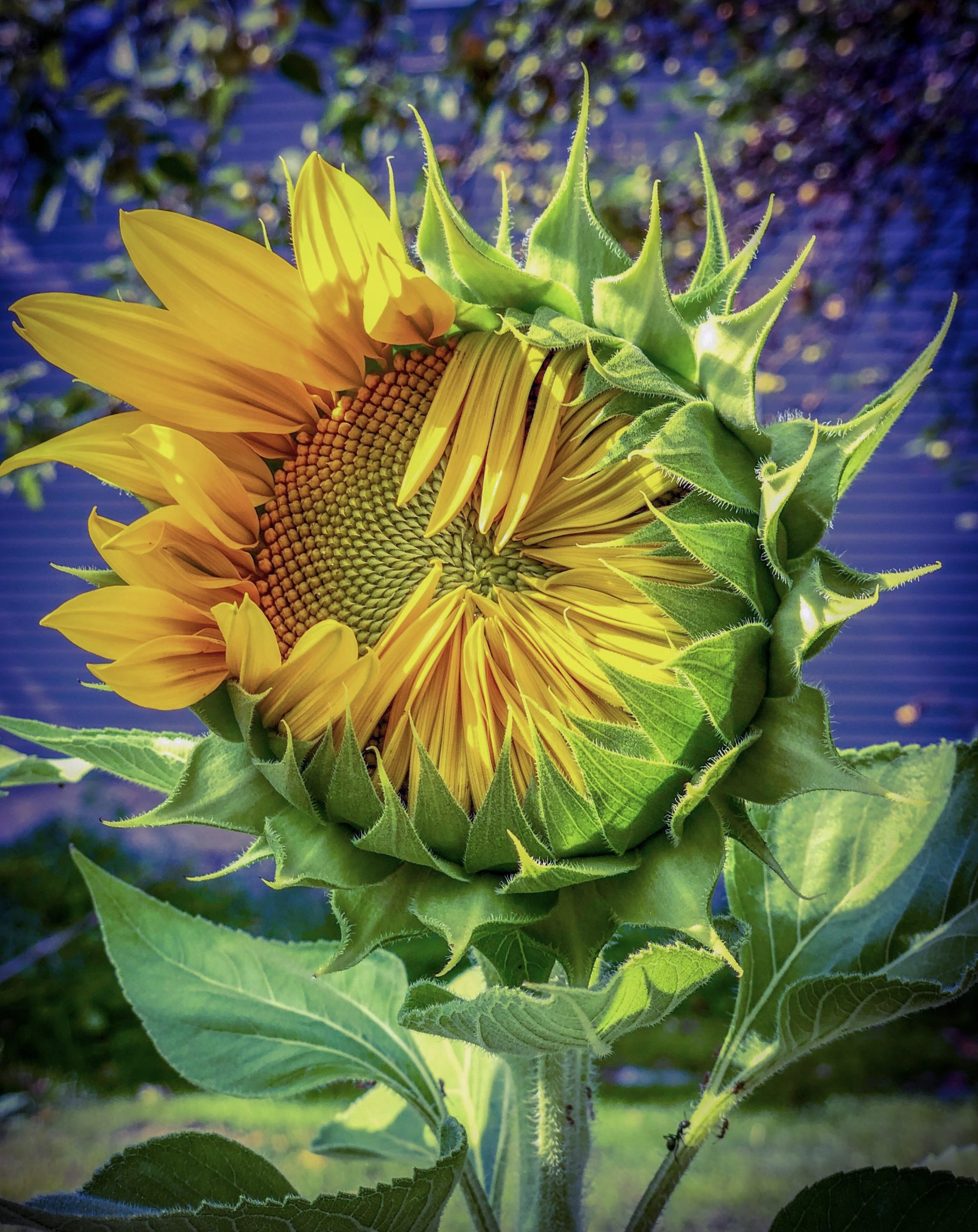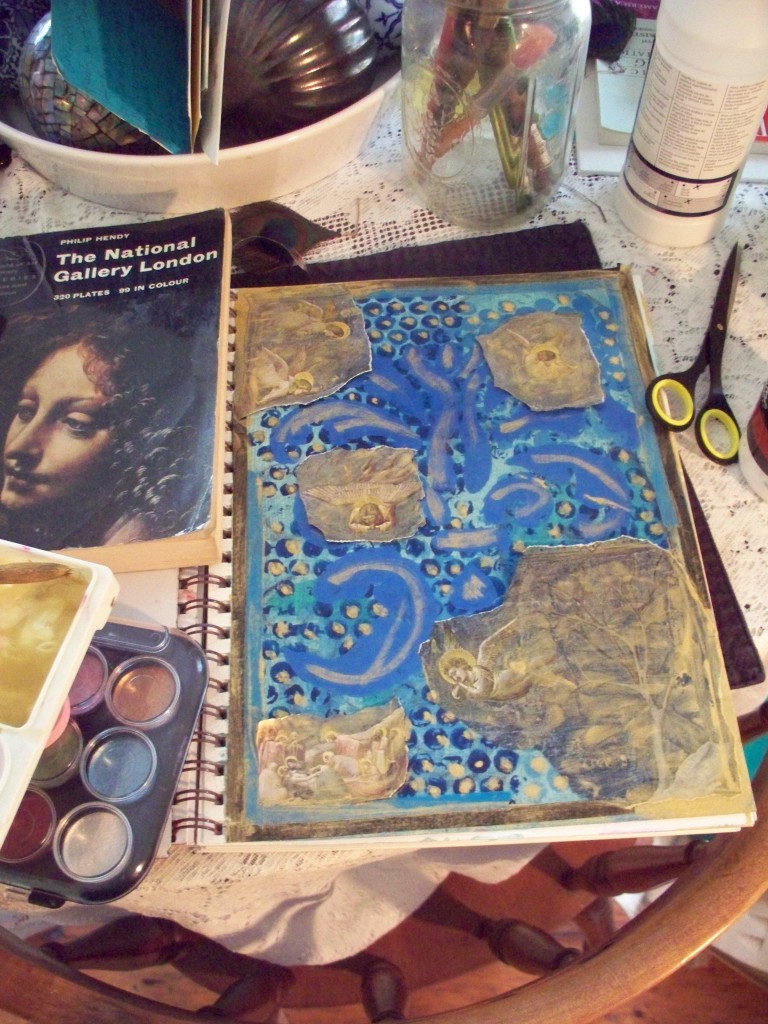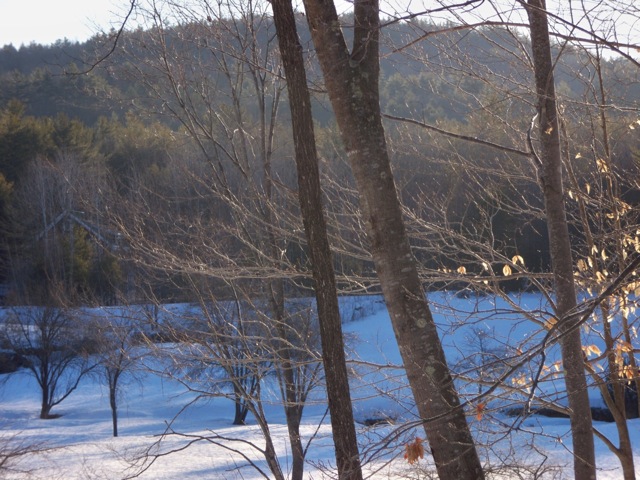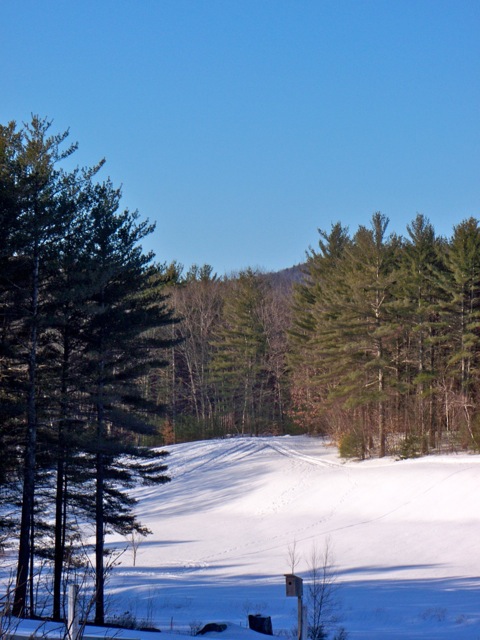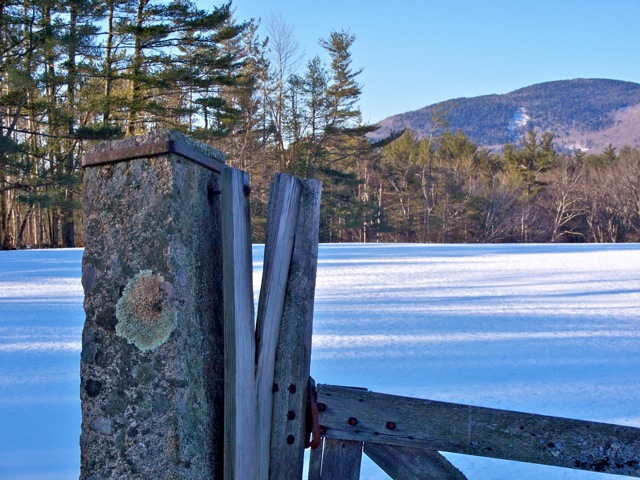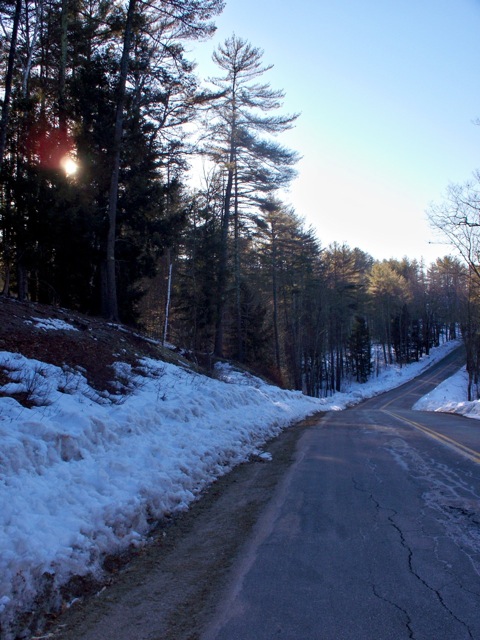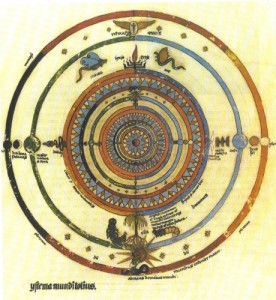My grandmother knocked on my bedroom door. “Your mother’s on the phone, she wants to talk with you.”
I was asleep. I rolled over and looked at the clock. It was a little past 2:30 in the morning.
“Huh? She wants to talk with me, now?”
My mother was a nurse and worked graveyard shift. She was calling me from work, the hospital.
I got out of bed and went to the kitchen phone, trying to wake up.
“Hi.”
“Do you have Susan’s phone number? Do you know where her and the girls are?”
Susan was my best friend Lynn’s mother. Susan had left Lynn’s father Rob a few days before, because of his rampant alcoholism.
“No. I don’t have their number. Why, why do you want their number. And why are you calling me now,” I insisted.
My mother didn’t hesitate, never considered the consequences of what she then said.
“It’s Rob. He’s shot himself. They’ve brought him into the emergency room. It’s not good. He needs surgery. They need Susan’s permission to go in.”
My best friend’s world had changed forever, and I knew it in that moment. Like the way I knew the world changed when I saw American aircraft dropping bombs on Baghdad. The morning that I watched shock and awe on CNN, I knew that world had changed forever, and that there was no going back. Something permanent and palpable had taken place, and the world was different.
I had the same feeling when I received my mother’s morning phone call, my junior year of high school. I knew that Lynn’s world had changed, that nothing would ever be the same, and there was no way to go back. I didn’t understand what that meant, I simply knew that something had irreparably exploded, that everything was now different, none of it for the good. My mother’s call was a psychic gunshot, leaving me numb and dumb.
There was another layer of devastation in this information, because I knew that Lynn’s world had imploded before she knew it. At fifteen or sixteen, there was a God-like knowing that had been unwittingly bestowed on me, because I knew that something horrific was about to visit my closest friend, one of the kindest, most generous souls that I have ever known, someone who would give you the shirt-off-her-back if you needed it, someone who didn’t play games like so many in our small high school did, and someone who never spoke with malice about another person. She was kind and fun and smart and cool. I loved her, trusted her, and envied her in the way the best friends often do, thinking her the better of us. We never once quarreled, never bickered, and we both avoided the catty, shallow people who overpopulated our school and town. My mother’s call was like watching a movie in which you know from the set-up that a guileless protagonist is going to suffer a terrible fate, and there’s nothing to do to stop the tragedy.
Only this was life, it was real, and the violence and destruction would irrevocably change her life, the whole of it. In that moment of knowing, my life changed as well.
“No. I don’t know the number where they’re staying at. I think the Walkers might. If someone at the hospital knows the Walker’s phone number, call them.”
I hung up.
*******
Lynn’s dad didn’t die. The gunshot managed to blow the cognitive part of his brain out, while leaving the parts that kept him a shell of a human. When I write, “blow the cognitive part of his brain out,” I am not being metaphorical. He lived for ten or so years with a large chunk of his head missing, a deep hollow in his skull existed where Rob once lived. He stayed in a long-term care facility, until his death.
The family rarely visited him. I think it was too difficult. Susan had lived for years with his alcoholism, and now there was this. I think, though I don’t know, she decided to salvage the pieces of her life, with as little guilt as possible, which probably took a long time. Lynn and her sisters couldn’t bear seeing their father wasting in a nursing home, seeing the man they loved existing as he did. He had been a gentle and generous man, a caring father, not abusive or violent, by all accounts and evidence. His drunken sin was melancholy, not violence. He was a sympathetic person for whom the excesses of self-medication had long ago quit working, and whose psychic demons got the best of him.
It wasn’t until we were out of high school, three years after the attempt, that Lynn finally visited him. “I went and saw my Dad,” she told me. In telling me of her visit, I knew that she was confessing to me her failure to visit him before this, and unburdening herself of what she saw. “It was so strange. The doctors say he doesn’t know anything, but I swear he knew me when I talked to him. There was something in his eyes, I would swear he knew it was me. It was weird.”
I didn’t tell her that I suspected she was correct. No, I never said that her father might be buried in there somewhere, happy to hear his oldest daughter’s voice, after so long alone in that bed. I wouldn’t give her a hint that some consciousness might stay in that shell of a body, forced to live knowing, in some way, what he had done to himself, and his family. I don’t know, and no one ever will. But I know that science is learning that a part of us often remains intact when the doctors pronounce that our minds have checked out, declare us brain dead. It’s emerging science, but its persuasive and resonates with the wild imaginings that many experience when they believe that, “there is somebody in there.” Until science catches up and gives us a new story, empirical research trumps experience. But I trust Lynn’s perception, and I believe that Rob’s heart or mind, something deep and residual, related to consciousness, jumped when she said, “Hi, Dad, it’s Lynn,” and took his hand in hers for a few minutes.
I wouldn’t tell her that. I said, “maybe he did, and if he did, I’m sure it made him feel better.” I then listened and understood when she told me that she couldn’t visit him again, for a while.
*******
When I write that “my life changed forever” because of Rob’s failed suicide attempt, I am not, again, being metaphorical. For the only thing that stopped me from killing myself for over a decade was the phantom that Lynn relayed of her father in that bed, after failing to kill himself. When Lynn described the scene of her visit, my mind created an image of Rob in that bed, part of his skull missing, which I elaborated and built on as time went on. One summer I worked in a convalescent hospital, and all the sights and smells and sounds of the half-dead and dying allowed me to add details to a picture that was already horrific. In my imagination, I saw Rob being turned, saw the oozing red bed sores, imagined the daily diaper changing, smelled those smells that long-term facilities fill your nose with, smells that rot memory’s fragrance of innocence. All the sorry particulars about what kept him going, I filled in with excruciating detail.
I imagined that he was living out every day alone, in that shell, suffering a fate worse than the one that he had tried to escape. I conflated the story of Dalton Trumbo’s “Johnny Got His Gun,” with Rob’s nursing home existence. Although Rob was brain-dead, because of Lynn’s description, and the flicker of life that she thought she saw, I imagined him trapped in a body, with enough memories remaining to plague him, a person with enough brain left to know that he needed changing and turning. I imagined him waiting for years on end for a visit, a timeless steam of days, endless and empty.
I developed this prolific embellishment from Lynn’s relatively brief story. But if I excessively ornamented her story, it’s because my psychic demons tormented me to excess. “To be or not to be” wasn’t a philosophical question, but my confrontation with a logistical reality: will a plastic bag work, how deep does a razor have to go, are there legal poisons that kill fast and quick. Immediacy is important, because it’s the overwhelming pain that needs remedy, without worrying about extending one’s life a day longer than necessary. The “what if I tried and failed” propelled an alternative narrative rich in sensory detail and emotional projection, a part of my psyche warning me to think this thing through.
Failure was not an option, so when it came to taking my life, the fear of failure proved a valuable ally in the will to survive’s beleaguered battle. When you’re in the throes of depression’s debilitating darkness, nothing really matters but finding a way to rid the mind and body of that crippling stranglehold. Sometimes in a movie, there is a character who gets gangrene, and must cut off their own limb to save their life. Suicide is similar, only to cut one’s psyche from one’s self, the whole of life must go. Suicide seems unerringly logical, for the rotting, debilitating thing needs ridding. For those who have never lived in depression’s fathomless depths, selfishness has nothing to do with it. It’s the pain. Day in, and day out. There’s no escape. Day after day, a relentless beast that consumes everything you have and then demands more. When the pain goes on for years, it’s like living with the infectious invasion of a gangrenous limb: though you know that poisons are spreading through you, know that the prices you are paying are too high, you don’t know how to make the thing go away, other than cutting it off. The weeks — no, months of my life — that I spent researching possible ways that I might permanently rid myself of the pain, and not merely fantasize about living without it, are incalculable. Researching my death, with a kind of scholarly ambition, was at times a part-time hobby: the idea of living without the oppressor was itself a hope, a medication. But Rob’s failure was the story that kept me from slashing my wrists deeply enough, consuming poison, putting a plastic bag over my head, for I learned early that I needed to get it right, needed to infallibly carry out whatever method might relieve me of the unbearable torment that was my life, the existence that I lived in.
I don’t know if the fear of failure is a good reason not to kill one’s self, but it’s the one I had for too many years.
*******
Manic-depression was the diagnosis. At my worst, I was on five medications, twelve pills a day. The doctors incrementally increased my Prozac dosage, until I reached the maximum dose of 80 milligrams, four 20 milligram capsules a day. It didn’t put a smile on my face, a bounce in my walk, or make me feel like life was worthwhile. Every few months involved a new medication, a different color to add to the assortment: meadow green, pale pink, baby blue, white, sunshine yellow. They discussed putting me on lithium, but I couldn’t take lithium, because, I believe it was the blue pill, and lithium were potentially dangerous when taken together. There was a quasi-lithium medication, a salt related to lithium that they thought would act like lithium, while taking the blue bill. Or that’s how I remember it. The blue pill was important for some reason. I had been on it for some time. It took time to reach therapeutic levels. It required a managed, protracted withdrawal. They wanted to keep me on it. Instead, they would start me on lithium’s blue-pill friendly cousin. This pill, they assured me, would do the trick, and I could stay on the needed blue pill.
There was a story for every pill, and none of the stories translated into psychic relief.
I don’t know how long the insanity to cure the craziness went on. Those days are lost in chemical soup. Eventually, I felt absolutely nothing. I was as dead inside as Rob had been in that bed, alive but not living. I barely functioned, struggled to complete life’s basic tasks, take a shower, brush my teeth, do the dishes. I usually had the groceries delivered. Shopping, some people’s medication of choice, overwhelmed me when things were especially bleak.
One day, I went to my apartment balcony, picked up my cat, held him, and looked out the balcony doors. Bleu was the new player in the unconscious will to survive. I doubted that anyone could cherish him as did I. I found him, because the clerk at out-patient psychiatry was talking about his Persian cat who was pregnant. I overheard him, and I told him that I would like one of the kittens. He agreed, and Bleu became mine before he was born. The horrors of the Rob narrative had weakened, from too many years of recycling, and too many years of psychic torment. Bleu was real, and he brought a new story into my life, because I wouldn’t leave him. My care of this little creature, despite my personal pain, affirmed something deep about me, and life. I replaced the picture of failure, the image thwarting my darkest demons from having their way, with hope, although I didn’t know it until writing this essay. This was the truth waiting to get out in this writing: I began a long process of psychic healing, when I replaced the image of failure with love. This was a deep shift, a meaning that I hadn’t comprehended until this moment. Caring for myself was onerous, but my invariable morning ritual was cleaning Bleu’s box, changing his water, and feeding him, the first thing every morning. In these simple daily acts, I touched something beyond the pain, however briefly. As I held Bleu and looked outside the balcony doors, stroking him and listening to his soft motor, I told myself, “I am going to live, or I am going to die, but I am not living like this anymore.” I then did what every psychiatrist tells their patients not to do, and I got rid of my medications. I didn’t simply quit taking them — I flushed one bottle after the other down the toilet, hundreds of dollars of meds, flushed.
I’m not suggesting psychiatric patients dump their meds. A friend recently pointed out that it’s miraculous that I didn’t die within days, from the physical shock of withdrawal. This never occurred to me. I simply knew that if I were going to live, I refused to live as a member of the walking dead. I don’t know how long I had been on meds, I think several years by this time. Presumably, one doesn’t quit taking potent psychiatric drugs, for as long as I took them, without supervision. So they say. My inner voice, a voice that is perhaps documented somewhere as “hears voices,” called me to life. The sound was the faintest whisper in my soul, but I listened.
I’m certain that a professional would scold me for being careless, for implying that seriously ill patients get a kitten, go off meds, and find happiness. I am not. Everyone differs. For me, because this is my story, my life, and my truth, I write that this was a powerful day, one that stays in my memory as pivotal, on an unconscious level, a really important seed planted itself in my soul. I gave myself a choice, to live or die. I chose to live, and somewhere, somehow, the message took hold. There’s no immediate happy ending to this story. I didn’t suddenly see the light, do the happy dance, and then go live in sunshine and flowers. The pain didn’t stop, nor did the suicide ideation disappear overnight. The road has been long, hard, and full of major setbacks. Including the Thanksgiving day that a too young Bleu unexpectedly died, and the crippling months following his death. I didn’t think that I would survive. But I did. Because that day that I looked out of my balcony doors, held a sweet creature in my arms, and dumped my meds, I affirmed life as a reality worth living, and that I was willing to work for, despite myself.
Because this is my story, it’s my truth, as I know it today.
If you’ve never struggled with depression, my great insight, that life is worth living and working for, is obvious, and my epiphany may sound obtuse in the extreme. For those of us with a skewed emotional lens, it is not. That’s the disease.
The Buddhists, positive psychologists, and William James talk about habits of mind. Meditation. Awareness. Finding the good in every situation. Saying affirmations. Writing affirmations. Finding a truth that resonates with goodness, hope, love, and our most generous human sentiments. Culling for the good in every situation and every person. Appreciating nature. Focusing on life’s abundance. “There is no way to happiness, happiness is the way” may sound like tripe to those who haven’t been to hell and back on a nonstop loop from which there seems no end. But for those of us who have, it is perhaps the most precious gift that life offers, to simply be, and from that, to be happy, a little at a time. Building on being, day by day, working on self-love, fostering a loving, soul centered consciousness, that’s freedom and peace. Life does the rest. A little at a time. Day by day.
I believe that I now live where I live, because of the work I’ve done for the past decade. Listening to the trees, the birds, seeing the seasons change, all of this life everywhere, I see and feel and hear, because I have known the other side more deeply than most. Life presented the opportunity to thrive, and I took it. There’s a synchronicity when you’re doing what you should, and listening better than before.
There’s no simple explanation about how I got from point A to point B: the road has been a lot of trial and error. I have no answers. I also know that I have shortchanged an important topic, one fitting for a book, into a truncated essay with a cat and some platitudes for its ending. That’s not the point. The point is my personal progression from a grim and firsthand knowledge of debilitating psychic pain, to a life in which I appreciate life’s most simple gifts a little more, and feel their profound happiness, here and there, as life goes on. I call that thriving.
My experiences seemed important to write on given last week’s headlines, not because I know someone else’s story, but because I wanted to share mine, however briefly.
I have done so.
